#TrailMoments with Noodle (@NoodsterScootster)
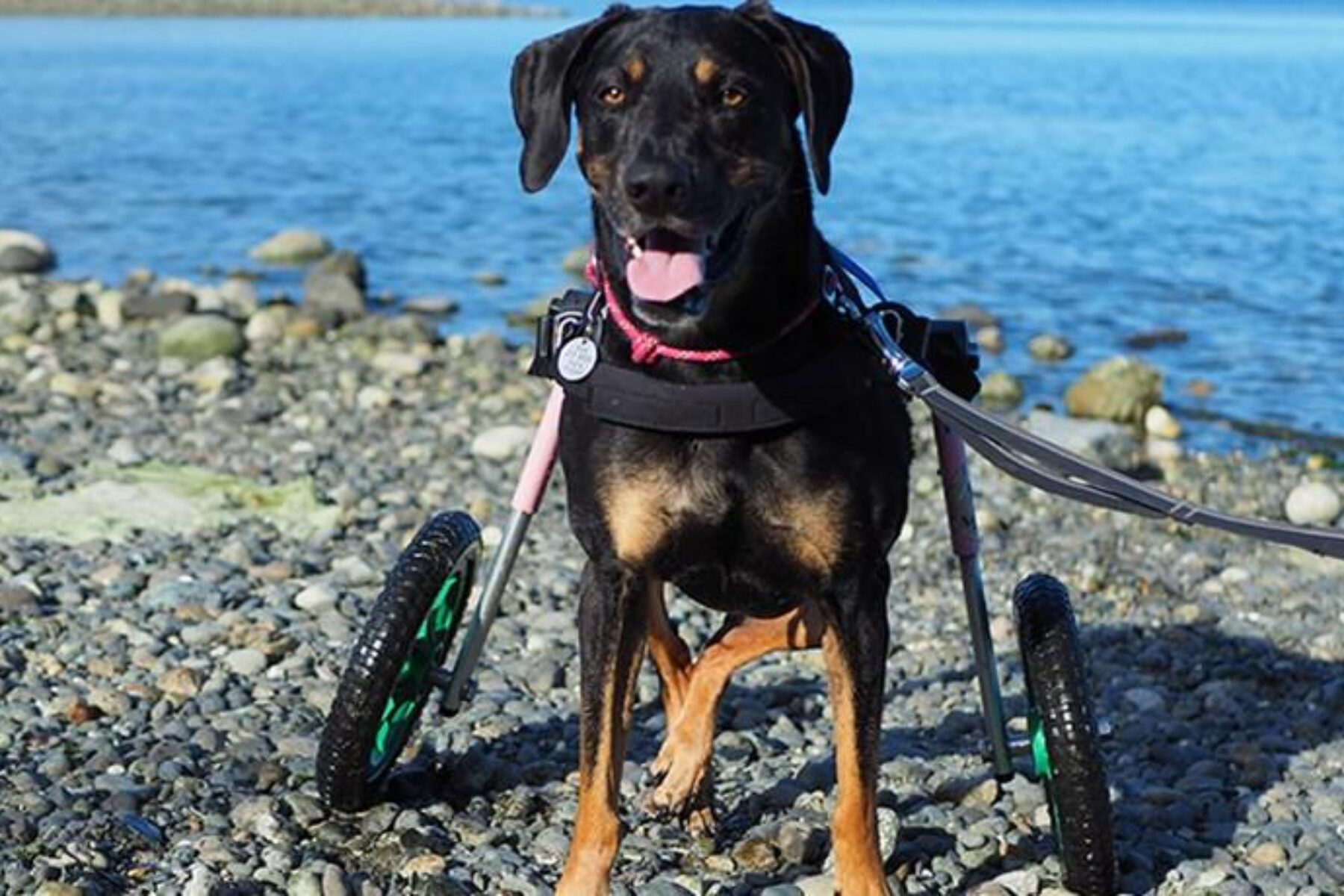
In addition to being trail lovers, the Rails-to-Trails Conservancy team is also filled with pet lovers. Luckily, many of us get to combine both passions by taking our pets for trail adventures, where they, taking their responsibilities seriously as members of #TeamRTC, help model good etiquette while sharing the trail (as well as model for the occasional blog or social media post). Not only do these adventures serve as quality time between us and our furry best friends, but they also can have a positive impact on our health and wellness—ranging from increased physical activity to lowering the risk of chronic diseases and even presenting us with more opportunities to socialize and connect within our community!
Since spending time with pets on trails makes our hearts happier, we were drooling over the chance to collaborate with Noodle, rescue dog and star of @NoodsterScootser, and her family, who have helped her adapt to the outdoors after being found with a spinal cord injury. Read about their time together on the trail and how they promote accessibility through their #TrailMoments!
Special thanks to Bree, Noodle’s parent, who translated their #TrailMoments into a human-friendly written format.
Could you please tell us a bit more about Noodle, your family and why you use trails?
Noodle is a very vivacious and energetic pup that happens to have a spinal cord injury. She was adopted by myself (Bree) and my husband, Kyle, when she was 4 months old from the Everett Animal Shelter here in Washington State, where she was first brought two months earlier with her injury. The cause of her injury is unknown, but we know that she is healthy and happy. Due to the injury, her back legs are not strong or coordinated enough to allow her to walk on her own, so this is where her scooter comes into play. We learned early on that she loves hiking on trails in her scooter and we’ve been exploring ever since.
What do you enjoy most about the trail experience? Have you had any particularly memorable moments on a trail?
When we adopted Noodle, our goal was to adapt to her mobility needs and allow her to be an adventure dog if she wanted. She evokes an array of reactions on the trails, whether in her scooter or being pulled by our bikes. I love the moments where we get to connect with another person or dog on the trail as she lends to an easy conversation starter.
What motivates you to get outside and to share those experiences with the public through @NoodsterScootster, and in what ways have trails made a positive impact on your life?
Being outside is innately Washington, just like drinking coffee. Whether we are using trails for exercise, a way from point A to B, or leisure, there exists this space to purposefully disconnect from all various stressors in life and just be with our family, friends and dogs.
Noodle was capturing the hearts of the Seattle area months before she came into our life. Keeping her on social media was a way to stay connected to the shelter and the community of Everett that supported her from the beginning. When we pull up to a trailhead, Noodle can be heard by all in the parking lot barking out of excitement.
Through your adventures with Noodle, you show and share why accessibility is important. Could you please tell us more about that and your experiences?
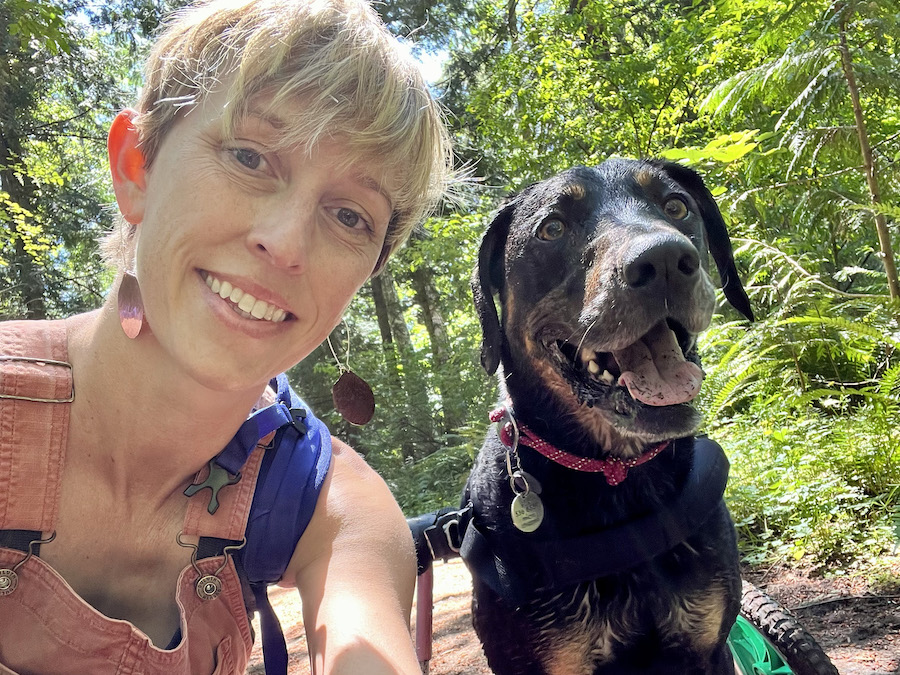
Kyle and I are both physical therapists. Accessibility and adaptation are always on the forefront of our mind, not just for our dog but for our patients and for my mother who lives with us. Noodle is a great way to have conversations about accessibility, disabilities and how to adapt to find adventure.
With their fellow humans, people may not always be inclined to freely ask these questions or have an open conversations about accessibility. With Noodle, I’ve noticed that adults feel comfortable asking us about Noodle’s disability, in an unreserved and honest way. Since Noodle came into my life, I’ve realized that a dog can help break down walls and be a conversation starter to the important topic of accessibility; through sharing Noodle’s experiences, I hope we are promoting this dialogue and advocating for accessibility.
RELATED: VIEW MORE TRAIL MOMENT STORIES ABOUT ACCESSIBILITY
You recently created your #TrailMoments by visiting the beautiful Tommy Thompson Trail, which has plans to ultimately link with another trail to form a longer system in the area.
Could you please tell us what excites you about that connected trail system (and other systems like the Great American Rail-Trail, which will connect communities between your home state, Washington and Washington, D.C.)?
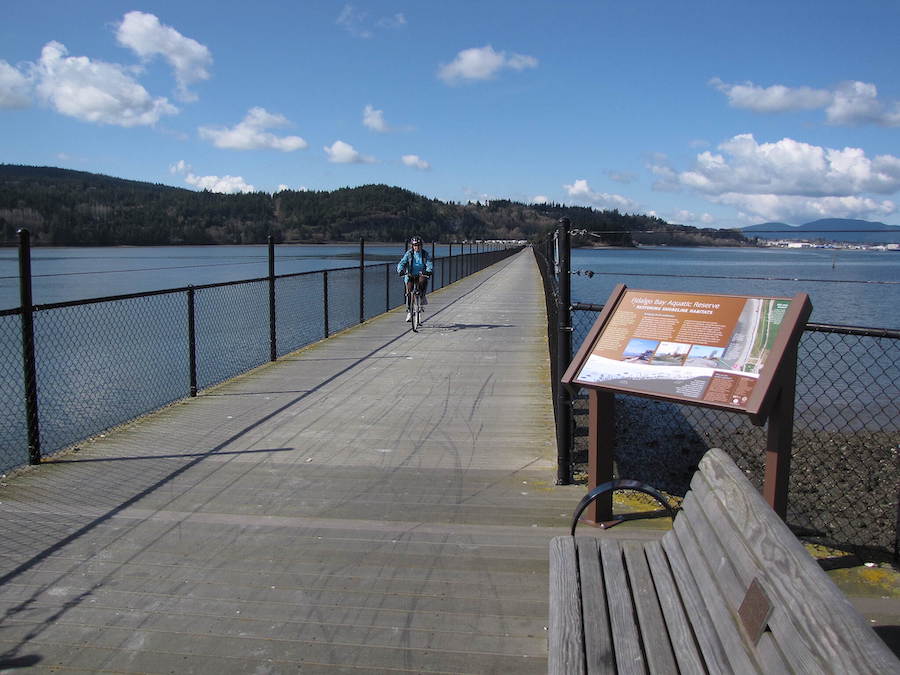
I strongly believe in this peaceful power of being on a trail. Regardless of the distance you go, your Strava time, or how much elevation, there is a unifying feeling of being outdoors. You feel connected to other people out recreating and to the environment you are out in. A connected trail system is a way to symbolize that unity from one area of town to another or from one end of the country to the next. A trail is something all people and animals can find enjoyment in. The more access we have to these trails, the more connected we can all be.
Any other tips or pieces of wisdom you’d like to share for hitting the trail?
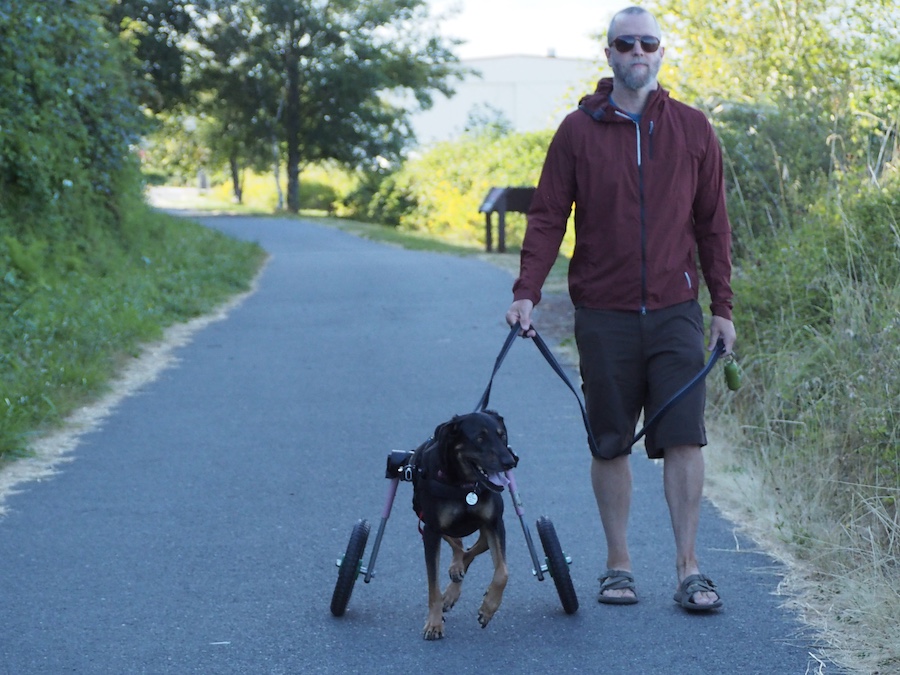
Speaking directly about accessibility is important to me. I hope that Noodle can be an ally in supporting individuals seeking out adaptations and accessible trails.
For Noodle, we do extra planning for trails, we carry back-up equipment for her scooter, and we have a harness to use if her scooter were to break when we’re miles into an outing. With humans, our accessible needs are as different as the fur on our dogs: No two needs are alike, but a starting point can often be existing organizations like Rails-to-Trails Conservancy that support outdoor access for people with disabilities. In the state of Washington, other organizations that help support accessible adventures include our park system, which has an online filter for accessible trails; @DisabledHikers, which just published a hiking guide for Washington and Oregon; and Outdoors for All, which is a nonprofit in Seattle assisting with adaptive recreation.
We all can look with observant eyes at how trails and outdoor areas can become more accessible for people who may need adaptations. A larger parking space for a wheelchair van, a bench to sit and rest while on a trail or brail on the trail placards; these examples represent just the tip of the iceberg in ways that trails can be modified to become more accessible and inclusive. Never be afraid to advocate for someone you know, yourself or for the person you don’t know.
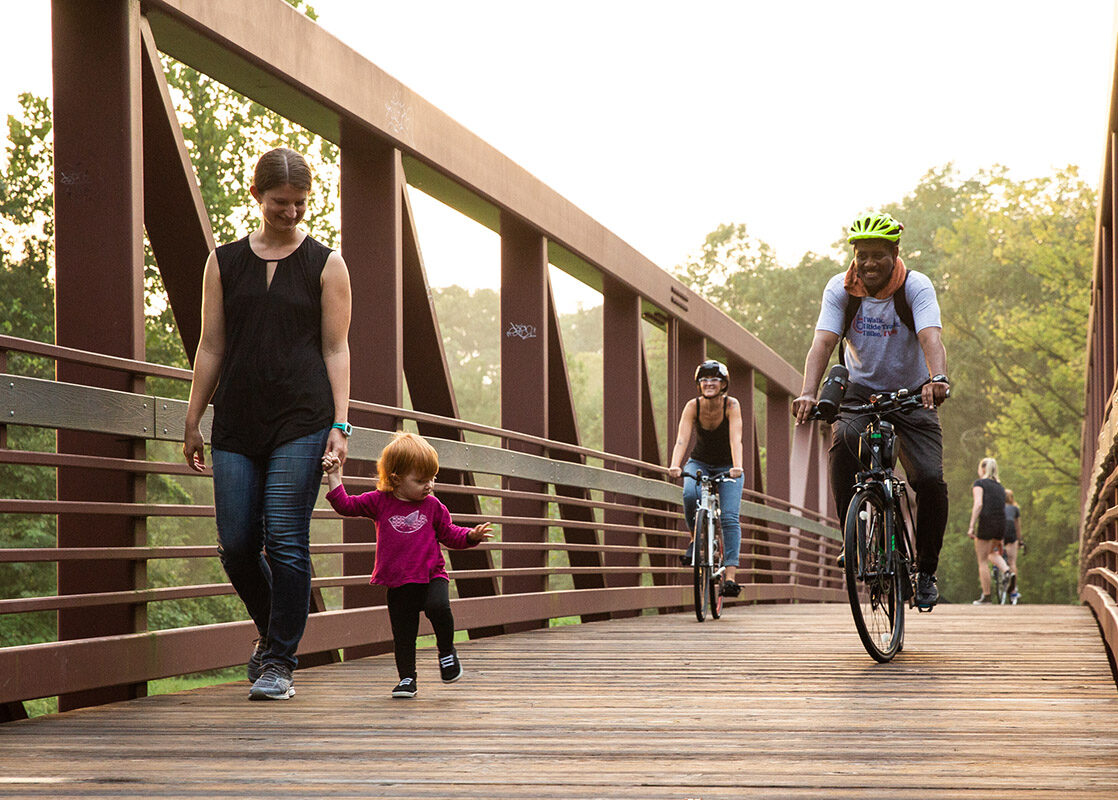
Donate
Everyone deserves access to safe ways to walk, bike, and be active outdoors.